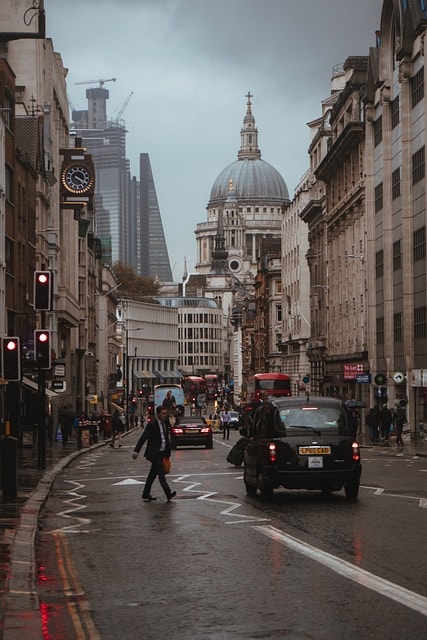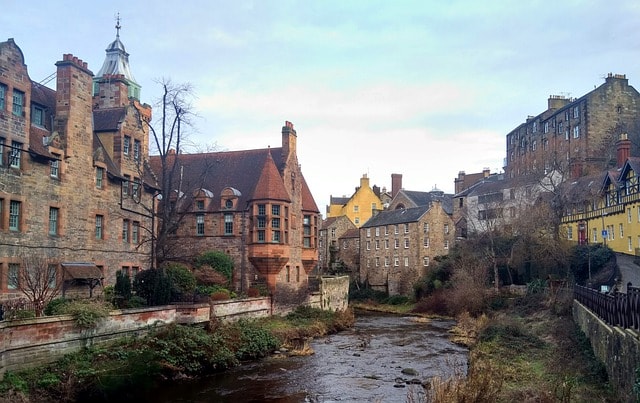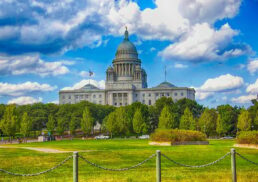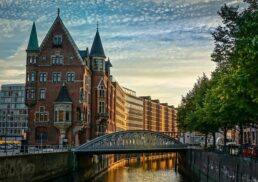Looking to explore British cities in 2024? This guide highlights the must-visit destinations, showcasing their historical landmarks, cultural events, and modern attractions.
Table of Contents
Key Takeaways
The UK, renowned for its blend of historical and modern attractions, includes 25 UNESCO World Heritage Sites and ranks among the world’s most visited destinations.
Key cities such as London, Manchester, and Edinburgh offer distinctive experiences, from historical landmarks and vibrant arts scenes to renowned festivals and sports culture.
Recently designated cities like Milton Keynes and Wrexham reflect the dynamic evolution of the UK’s urban landscape, emphasizing community growth and diversity.
Introduction

Picture this: You’re kayaking under the moonlit sky of London, or perhaps you’re sipping on a finely crafted gin in Cardiff. Maybe the mystery of Edinburgh’s underground streets beckons you. Such is the existence of adventure in the United Kingdom, a land where history and modernity blend seamlessly.
With England alone housing 17 of the UK’s 25 UNESCO World Heritage Sites, the UK’s appeal as a destination is undeniable, having ranked as the world’s 10th most visited country for tourists in 2018. Wales, with its harmonious mix of historical significance and contemporary allure, offers bustling capitals and scenic coastal towns that charm every traveler.
Must-Visit Cities in England

The tapestry of the United Kingdom is woven with a myriad of cities, each stitching its thread with unique attractions and experiences. Some of the notable cities in the UK include:
London
Manchester
Birmingham
Edinburgh
Glasgow
Liverpool
Bristol
Leeds
Newcastle
Cardiff
Each of these cities offers a distinct flavor of British life, from historical landmarks to vibrant cultural scenes.
From the bustling streets of the capital to the storied music venues of the north, the cities of the United Kingdom are a testament to the diverse fabric of this nation.
London
Upon entering London, the largest city in the United Kingdom, one is immediately drawn into a vibrant milieu that is both a thriving metropolitan borough and a kaleidoscope of history and culture. It’s a city where the ancient past and the pulsating present coexist, a place where one can admire the stoic grandeur of the Tower of London or the regal elegance of Buckingham Palace. With a population topping 9.65 million, London is not only the urban area that dominates England but serves as the cultural and economic capital of the country.
The grandeur of greater London is amplified by the presence of the historic city corporation and the distinct boroughs, each contributing to the city’s tapestry. Tourists flock to this urban area, making it the most visited city in England with attractions that span from the historic to the avant-garde. The British Museum alone is a cultural institution that houses the world’s collective history, while areas like the City of Westminster offer a glimpse into the political heart of the UK.
Manchester
Heading north, Manchester emerges as a poignant reminder of England’s industrial past, its landscape carved by the once mighty engines of progress. Renowned for its role in the industrial revolution, this city has transformed its rich heritage into a vibrant urban playground, offering a melange of music, art, and sport.
Manchester’s urban area resonates with the rhythm of its music scene, which has given rise to a cultural landscape as diverse and dynamic as its population. The city’s sporting culture is equally famous, with its football clubs known across the globe.
This Northern English city embodies the spirit of innovation and resilience, making it an essential stop on any itinerary of the United Kingdom.
Liverpool
Liverpool, steeped in rich maritime history, emerges as a vibrant cultural center on England’s northwestern coastline. Its waterfront, a UNESCO World Heritage site, stands as a testament to the city’s global significance and storied past, a narrative that extends far beyond its fame as the birthplace of The Beatles.
The city’s identity is deeply intertwined with its historical significance, from its wealth in the 18th century to its contemporary status as the number one large city for staycations in the UK for 2024. Beyond the legendary Beatles Story museum, Liverpool offers a cornucopia of attractions that celebrate its historical and cultural essence, making it a city that truly captures the spirit of the United Kingdom.
Iconic Scottish Cities

Venture north of the border into Scotland, and the cities of Edinburgh and Glasgow stand as cultural beacons, each with their own illustrious narratives. Edinburgh, with its majestic castles and festivals, and Glasgow, with its rich musical heritage, offer travelers a taste of Scotland’s proud history and contemporary zest.
Edinburgh
Edinburgh, Scotland’s capital rich in lore, is marked by the grand Edinburgh Castle and the ancient Arthur’s Seat, together forming a striking skyline that narrates the city’s medieval past. The city’s streets are alive with history, where the Royal Mile stretches from the castle gates down to Holyrood Palace, lined with historic buildings, shops, and landmarks.
The city is not just a bastion of history; it is also the stage for one of the largest book festivals in the world and the renowned Edinburgh Festival, which encompasses a range of events from the International Festival to the Fringe, attracting performers and spectators from across the globe. Edinburgh’s celebration of the arts is unparalleled, with the Edinburgh Fringe Festival standing as the world’s largest arts festival, a testament to the city’s cultural prominence.
Glasgow
Glasgow, Scotland’s most populous city, resonates with the heritage of its industrial prowess, having once been a global powerhouse where ships took shape and engines were crafted. Today, the city has reinvented itself as a cultural hub, with a music scene that has earned it the title of UNESCO City of Music, and a dining scene that boasts over 2,000 bars and restaurants.
The city’s architecture mirrors its rich history and innovative spirit, from the storied Glasgow Cathedral to the cutting-edge Glasgow School of Art. Theatres, galleries, and music venues abound, with the Glasgow Royal Concert Hall and the King’s Theatre being prime examples of the city’s vibrant arts scene.
Notable Cities in Wales
Wales, with its verdant valleys and rugged coastline, is not to be overlooked. Cardiff and Swansea, two cities that embody the Welsh spirit, offer a blend of historical landmarks, modern attractions, and natural beauty that captivate those who visit. The charm of Wales extends beyond these cities, reaching into the picturesque rural areas that surround them.
Cardiff
Within Cardiff, the Welsh capital, Cardiff Castle rises as a medieval fortress and Victorian Gothic revival mansion, encapsulating the city’s historical journey. This architectural masterpiece has evolved from royal residence to military stronghold throughout its centuries-long existence.
Adjacent to the castle, the Principality Stadium looms as a modern-day colosseum, hosting sporting spectacles that captivate tens of thousands.
Cardiff Bay further embellishes the city’s waterfront with its attractions, such as the Wales Millennium Centre and Techniquest, offering educational and cultural experiences to visitors of all ages.
Swansea
Swansea, the coastal gem of Wales, is renowned for its cultural hubs and picturesque sandy beaches. The city’s Maritime Quarter, in particular, is home to the National Waterfront Museum, where Wales’ industrial and maritime heritage is brought to life through interactive exhibits.
Swansea’s beaches offer a serene escape from the urban bustle, providing a picturesque setting for leisure and reflection. The city’s blend of maritime history and modern attractions, combined with its coastal charm, make Swansea a destination that truly embodies the essence of Wales.
Prominent Cities in Northern Ireland

Northern Ireland, with its rolling green landscapes and historic cities, presents an intriguing chapter in the UK’s narrative. Belfast and Derry/Londonderry are prominent cities that offer a glimpse into the region’s rich history and vibrant communities.
Belfast
Belfast, once globally acclaimed for its shipyards, carries a maritime heritage deeply intertwined with the narrative of the RMS Titanic. The Titanic Belfast, located in the Titanic Quarter, is a poignant tribute to the city’s shipbuilding heritage, offering visitors a deep dive into the bygone era of ocean liners.
Beyond its maritime history, Belfast’s city center offers a vibrant tapestry of nightlife and shopping districts, having risen from the ashes of World War II damage to become a bustling hub of activity. The Titanic Slipways and the SS Nomadic add to the narrative, connecting the city’s past to its present as a thriving urban center.
Derry/Londonderry
Derry/Londonderry, a city esteemed for its well-maintained 17th-century fortifications, stands as a stronghold of history in Northern Ireland. The city is not just a relic of the past but a living, breathing community that celebrates its culture through events like the Derry Halloween celebration.
Landmarks such as the Guildhall, with its stunning stained-glass windows, serve as venues for a variety of cultural happenings, reinforcing Derry’s reputation as a city of festivals and the arts. The city’s parks and residential neighborhoods add to the charm, making Derry/Londonderry a city that is rich in history and full of life.
Lesser-Known Gems
Beyond the well-trodden paths of the UK’s larger cities lie lesser-known gems that offer rich historical experiences and unique attractions. Cities like York, Bath, and Winchester invite travelers to explore their hidden treasures, from medieval architecture to Roman baths.
York
York, a city imbued with 2000 years of history, serves as a living museum with its meticulously preserved medieval architecture and ancient streets, such as the Shambles, rooted in the medieval era. At the heart of the city stands York Minster, the largest medieval cathedral in northern Europe, a Gothic masterpiece that dominates the skyline and encapsulates the city’s rich religious and cultural heritage.
The city’s Roman and Viking roots are celebrated through events like the Jorvik Viking Festival, which brings history to life with battle re-enactments and historical crafts. York’s city walls, some of the best-preserved in England, encircle the city and offer a glimpse into its storied past.
Bath
Bath, a city celebrated for its Georgian architecture and Roman legacy, houses some of the world’s most excellently preserved Roman baths, drawing visitors with their timeless charm. The city’s architectural splendor is exemplified by the Royal Crescent and The Circus, designed by the architects John Wood the Elder and John Wood the Younger, making Bath a pinnacle of Georgian elegance.
Yet, Bath is more than its stone and water; it’s a city with literary connections, having been home to Jane Austen. The historic Pump Room, where visitors would ‘take the waters’ for their health benefits, is a remnant of the city’s spa town legacy, offering a taste of its regal past.
Understanding City Status in the UK
In the United Kingdom, city status is a revered title that bestows honor and prestige, irrespective of specific benefits or governmental structures, such as a unitary authority. It represents a title that is both sought after and cherished by communities across the nation.
Application Process
The pursuit of city status within a council area is a competitive endeavor, overseen by the Ministry of Housing, Communities, and Local Government. Towns aspiring to the title must go through the following process, including the potential establishment of a lord mayoralty:
Submit well-crafted bids to the Lord Chancellor.
The Lord Chancellor makes recommendations to the sovereign.
The monarch, advised by ministers, officially grants city status through ‘letters patent’.
Recent Additions
The latest entrants to the roster of UK cities mirror the dynamic evolution of Britain’s urban tapestry. In 2022, cities like Milton Keynes, Colchester, and Wrexham were honored with city status, joining the ranks of established cities in enriching the nation’s cultural and historical fabric.
This expansion, including locales like Douglas in the Isle of Man and Stanley in the Falkland Islands, illustrates the UK’s commitment to recognizing the diversity and growth of its communities.
Demographics and Population Statistics
The thriving vitality of the UK’s cities stems from their inhabitants, whose varied backgrounds and narratives mold the distinctive character of each urban enclave. Understanding the demographics and population statistics of these cities provides a glimpse into the living, breathing entities they are and the trends that will shape their futures.
Largest Cities by Population
The UK’s largest cities by population present a hierarchy of urban centers, each commanding its own significance within the country’s landscape. London, with its ever-growing population, continues to be the largest city, while Birmingham holds its place as the second-largest city in the UK.
Glasgow stands proud as Scotland’s largest city, pivotal in the nation’s industrial story, and the Leeds/Bradford area aggregates a sizable population, underscoring its regional importance.
Population Trends
Recent data suggests a marked increase in the urban population of British cities, revealing the dynamic and ever-changing nature of these metropolises. London’s population, for instance, has seen substantial growth over the past decades, underscoring the city’s draw as a global hub of finance, culture, and innovation.
This upward trend in the estimated population size is a testament to the magnetism and opportunities that major British cities offer to residents and newcomers alike.
Unique Characteristics of British Cities
Every British city is a distinct entity in itself, harboring unique traits that set it apart from its counterparts. From the blend of historical and modern elements to distinct architectural styles and cultural festivals, these urban areas are more than just points on a map—they are the cultural heartbeats of the UK.
Architectural Styles
The architectural styles across British cities are as diverse as the stories they embody. Gothic cathedrals with their sky-reaching spires, Victorian buildings adorned with intricate brickwork, and sleek modernist structures coalesce to form the eclectic skylines that define UK cities. Cities like York and Manchester showcase the breadth of these styles, from the ancient to the contemporary, offering an architectural journey through time.
Glasgow, for instance, presents a patchwork of architectural marvels, encompassing the historic Glasgow Cathedral and the avant-garde designs of the Glasgow School of Art. This diversity is mirrored across the nation, where each city’s buildings tell stories of eras past and aspirations for the future, standing as monuments to the UK’s rich cultural and historical legacy.
Cultural Festivals
The UK’s cultural festivals serve as vibrant strands interweaving the social and artistic tapestry of its cities. From the literary gatherings at the Hay Festival to the exuberant street parties of Hogmanay in Scotland, these events draw visitors from near and far, eager to partake in the celebration of British culture.
Unique traditions abound in British cities, including:
The Highland Games showcasing Scotland’s athletic heritage
The Jack in the Green festival in Hastings, where folklore comes to life
The quirky Cooper’s Hill Cheese-Rolling event, capturing the spirit of British eccentricity
These festivals, whether commemorating history or simply embracing communal joy, are an integral part of the cultural identity of British cities.
Check out What are Britons top travel destinations for 2024?
Summary
As we draw the curtain on this exploration of the UK’s urban tapestry, we reflect on the rich history, diverse culture, and vibrant modernity that define British cities. From the storied streets of London to the cultural festivals of Derry/Londonderry, the cities of the United Kingdom offer a kaleidoscope of experiences that beckon travelers from every corner of the globe. Whether it’s the architectural splendor of Bath or the maritime legacy of Belfast, there’s a British city that speaks to every heart, inviting you to partake in its unique story.
Frequently Asked Questions
Can cities in the UK have city status without a cathedral?
Yes, cities in the UK can have city status without having a cathedral. Birmingham became a city without a cathedral in 1889.
What are some unique activities to do in London?
You can experience unique activities like moonlit kayaking to see London from a different perspective. Enjoy a memorable adventure on the river.
What recent event has led to new cities being granted city status in the UK?
Several cities including Milton Keynes, Colchester, and Wrexham were granted city status in 2022 as part of the Queen’s Platinum Jubilee celebrations.
Which city has the highest population in the UK?
London has the highest population in the UK, with an estimated 9.4 million residents.
Are there any lesser-known cities in the UK that are worth visiting?
Yes, cities like York and Bath in the UK are worth visiting for their medieval architecture, Roman baths, and rich history.









